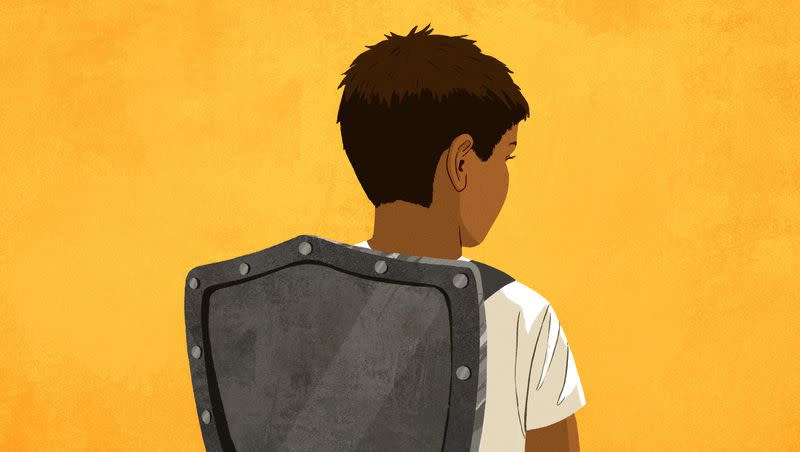Perspective: Don’t call it ‘bullying’ when it’s something far worse

An article in The New York Times earlier this week described the shocking suicide of a 17-year-old boy at one of the nation’s top prep schools. The Lawrenceville School in New Jersey took responsibility.
The school issued a statement that read, in part: “The school acknowledges that bullying and unkind behavior, and actions taken or not taken by the school, likely contributed to (the student’s) death.” The administration plans to add a dean who “will be focused on mental health issues, with a goal of becoming a model for anti-bullying and student mental health.”
But was bullying really the problem? Or was it something else?
The school’s statement and its plan of “corrective actions” are part of a settlement with Jack Reid’s parents. That’s progress, given that few schools ever explain their role in these sorts of tragic situations, and fewer still accept responsibility.
But what happened to Jack wasn’t the thing that usually springs to mind when people talk about bullying. No one made fun of his appearance or used some kind of racial slur. Rather, someone on campus started a rumor that Jack was a rapist and that accusation was then spread on a website. It got to the point where someone “jokingly” gifted him a rape whistle. Perhaps the most heartbreaking passage in the story is when Jack goes home for Christmas and asks, “Dad, will this ever go away? ... Will it ever get off the website?”
It’s easy to say that this is a story about bullying. But it’s more a story about how false accusations of sexual assault can ruin someone’s life.
Unfortunately, we live in a society where false accusations are not uncommon. The other day, a friend was telling me about a girl in her daughter’s school who told friends that a boy she was dating had made some unwanted advances. Friends heard this and told their parents who then told the school, setting in motion a whole chain of events that led to a lengthy investigation and the boy eventually deciding to leave the school. But the girl later admitted that she might have been exaggerating. She was contrite, but by that point it was too late.
Young people today would mock the idea that when you make such accusations, you are undermining a man or boy’s honor, as previous generations believed.
But the truth is that such accusations fall into a different category than, say, accusing someone of plagiarism, or the relentless insults and bullying that play out daily on social media.
It’s not that garden-variety bullying on social media isn’t serious; it can be, and it can have serious consequences, including suicide. But when everything comes under the umbrella of bullying, when the solutions are “don’t be mean” and “please be more compassionate,” we don’t fully address the underlying issues.
Calling everything “bullying” is easy because we know how to address that: Teach kids to be empathetic. Put yourself in the shoes of the other person. Understand that words can have consequences.
But we need to specify what the problem actually is. Sometimes it is sending text messages insulting someone’s appearance. Sometimes it’s a false accusation of sexual assault. And sometimes it’s entirely something else.
Related
In a recent essay in The Atlantic, Dara Horn reports on “Holocaust education,” the ways that schools and museums around the country are using the slaughter of 6 million Jews to educate young people about the dangers of being a “bystander” instead of an “upstander,” or to understand why it’s bad to hate other people.
Horn writes, “The effort to transform the Holocaust into a lesson, coupled with the imperative to ‘connect it to today,’ had at first seemed straightforward and obvious. After all, why learn about these horrible events if they aren’t relevant now?
“But,” Horn writes, “the more I thought about it, the less obvious it seemed. What were students being taught to ‘take a stand’ for?”
It’s not at all clear. “Visitors were asked to ‘take the pledge’ by posting notes on a wall (‘I pledge to protect the Earth!’ ‘I pledge to be KIND!’). Screens near the exit provided me with a menu of ‘action plans’ to email myself to help fulfill my pledge: how to fundraise, how to contact my representatives, how to start an organization.”
While many of these Holocaust-education curricula discuss bullying, very few focus on anti-Semitism, a problem that is alive and well today.
Of course, one could say it is important that we teach our children to have compassion and to treat others with respect, no matter what they look like or act like. But, as one person told Horn in frustration, “The Holocaust is not a good way to teach about ‘bullying.’”
Children are told from the time they are toddlers to play nicely and be kind. Sometimes we need to delve a little deeper, to explore the specifics of why people treat others poorly, and the long history of these hatreds. In short, how do we combat bullying? The best way is to define it — and to say what it is, and what it’s not.
Naomi Schaefer Riley is a senior fellow at the American Enterprise Institute, a Deseret News contributor and the author of “No Way to Treat a Child: How the Foster Care System, Family Courts, and Racial Activists Are Wrecking Young Lives,” among other books.

